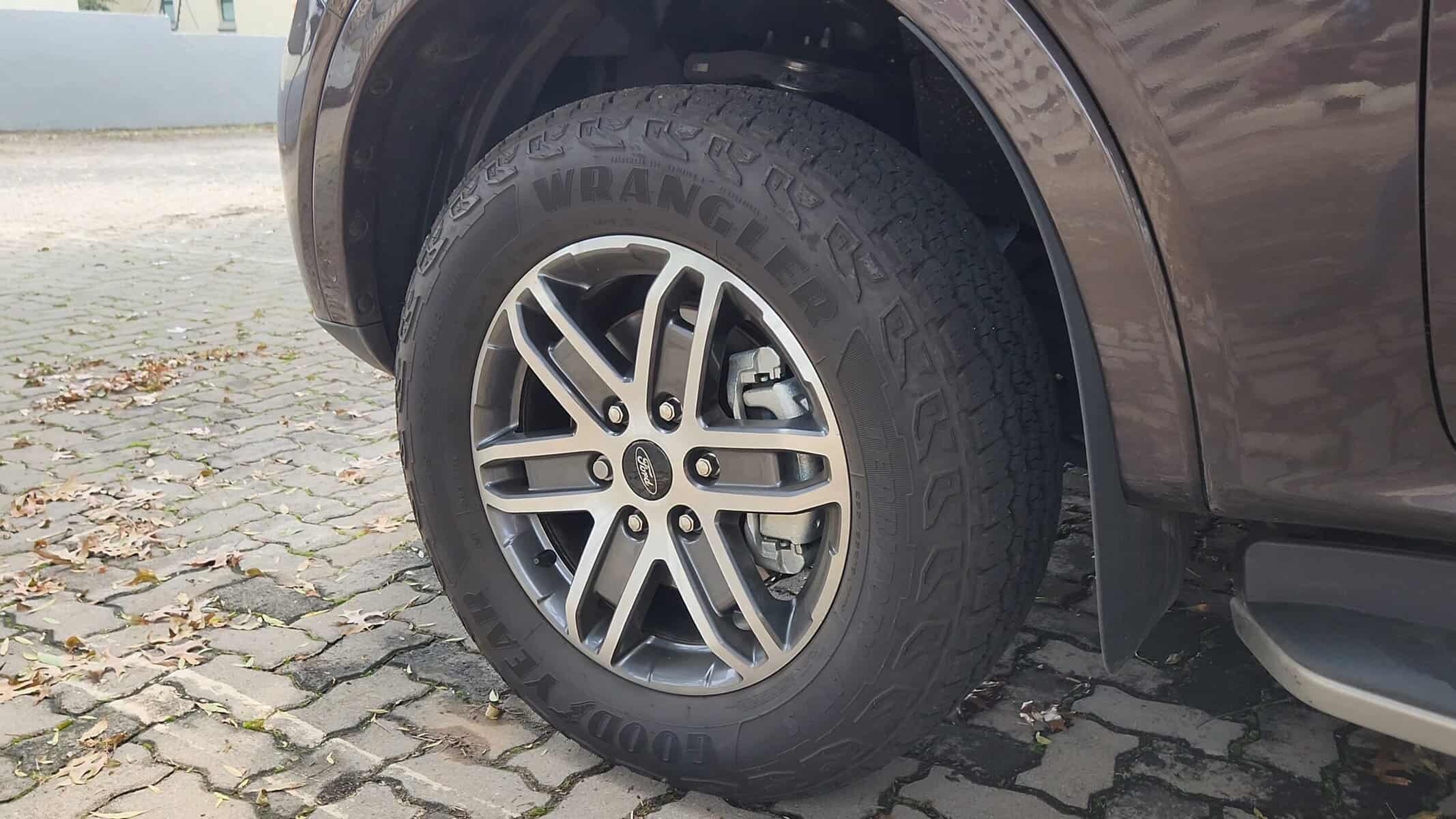Big alloy wheels and low-profile tyres may look sleek, but the Ford Everest’s high-profile tyres offer better comfort and durability on rough terrain.
Ford Everest. Picture: Supplied
In the world of automotive design and engineering, there is always a tussle between form and function – basically, what a vehicle, or part of it, looks like compared to how it works.
And nowhere is this more evident than in wheels and tyres – which are some of the most effective items to use to “sex up” a dull design.
Look at how many “pimped” VW Polos there are on the road – with striking alloy wheels, impossibly low-profile tyres and even with lowered stances.
ALSO READ: Motorists warned of new tyre spiking method
Most of these add-ons bring nothing to the table, performance-wise, but, bro, they look way cool when you’re showing off to your mates on the sidelines of the illegal Friday night drags.
It is true that low-profile tyres can significantly improve the grip of a car – but you would mainly need this on a racetrack, because generally, for day-to-day driving, the lower the profile, the less comfortable the ride is going to be.
That makes sense because the tyre sidewall in a low-profile tyre is smaller, hence the name.

What has been interesting over the past decade or so is that manufacturers are starting to put low-profile tyres as options on SUVs and 4x4s… And these combinations, while they may add pizazz, could get you stopped on a proper off-road trail…or leave you with rim and tyre damage.
Ford’s top-of-the-range Everest Platinum – which we currently have on a long-term test – is no exception to this trend. Make no mistake, the V6 diesel-powered luxury wagon looks awesome when shod with 20-inch alloys and low-profile tyres.
Unlike most other cars, the excellent absorbent suspension of the Everest hides a lot of the deteriorating in-ride quality which inevitably comes with the low-profile rubber.
ALSO READ: VIDEO: Rock-punishing BF Goodrich KO3 A/T tyre grips into action
When the time came to collect our long-termer, though, we discovered it is fitted with the “optional” 18-inch alloy rims and higher-profile “all-terrain” tyres.
First impression: Nope, not as sexy as the 20-inchers. Second impression – and by far the longer-lasting one – “Wow! What an amazingly comfortable ride!”
The higher sidewalls soak up everything that a pockmarked cityscape like Joburg can throw at them, and on rough dirt, they provide a magic carpet ride.
That can have its drawbacks – as I found to my cost when barrelling along gravel roads in the Karoo National Park outside Beaufort West last month.
ALSO READ: Tyres stolen from van in Bengal Road, Ladysmith
Because the Everest is so fuss-free, I wasn’t paying attention and must have hit a depression full of sharp rocks too fast and hard.
Fortunately, the Platinum Everest has tyre pressure sensors, so the dash soon lit up with the news that the pressure had dropped from 3 to 1.3 bar. Within a few kilometres, it had fallen to 0.5 bar, forcing me to pull over and change the wheel.
Therein lies another lesson: Read the handbook. The Everest has the spare underneath the boot and requires different tools.
One observation, though: The jack supplied by Ford had to be extended to its full height and, even then, I struggled to get the flat wheel off and the spare on.
If you are considering this car, get a sturdy block of wood on which to place the jack to give you that extra bit of working room.
ALSO READ: The sophisticated Ford Everest
Overall, though, the experience with the high-profile tyres and smaller wheels (standard 4×4 practice for serious off-roaders) gave me a new insight into how to use cars.
Now, I will go for function over form every time.
Download our app